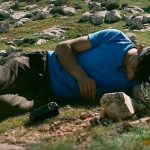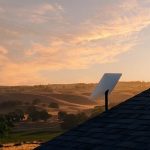boomtown production

Dubai-based Boomtown Productions recently produced a 30-minute documentary on the camel beauty pageant in the Western region of Abu Dhabi on 16mm.
The film, which was meant to be an "artistic endeavour", according to Shane Martin, executive producer and managing director of Boomtown Productions, was deliberately produced on fi lm to create a more "organic and rugged look" so as to "enhance the style of the documentary".
The crew shot for five days. The footage was captured on two 16 mm cameras as well as a Canon 5DMkII.
Perhaps the most challenging aspect of this documentary was bringing it together in post.
Several issues needed to be addressed. For one, the lack of a tight script meant that the narrative would have to come to life in post. Secondly, the conversion from 16mm to 2K created a lot of noise and grain, which needed to be cleaned up frame by frame.
"While the concept was interesting and the footage powerful, this film came to life in the edit – it could not have been any other way," stated Omar Abbas, head of post production at Boomtown.
"We went over the footage again and again, organising it and sifting through it to fi nd the bits that worked. It was nothing like working with a constructed narrative, where you have a script and you shape the footage accordingly; it was a meeting half way between the concept and the footage."
After the offline edit, the rushes were sent to Optix in Hamburg to grade the project in 2K. "Optix in Hamburg follows a file-based workflow. This means we’d have a hard drive full of graded 2K rushes. This is the only way to go as tape-based workfl ows are cumbersome and have limited HD resolution, and most tape machines compress the image as they record it," he added.
Unfortunately, the grading process as well as the high resolution of the 2K material made the grain on the rushes really apparent. Although some grain was intended to create "an organic" look, Abbas says he had to denoise the rest.
"I used the Nuke V6 and the Furnace plug-in from The Foundry. We processed nearly every shot in this documentary with the help of this software, and tweeked the level of grain in ways we saw fit. 16mm is also prone to dirt and dust scratching the fi m, and the dirt removal plugin from The Foundry was a time-saving tool that automatically processed the frames and figured out what was dirt and dust by calculating the motion of the objects on the image. It saved us a lot of painstaking labour," added Abbas.
Boomtown is presently in talks with broadcasters to show the documentary on their channels, and is considering undertaking more non-commercial projects.





































































